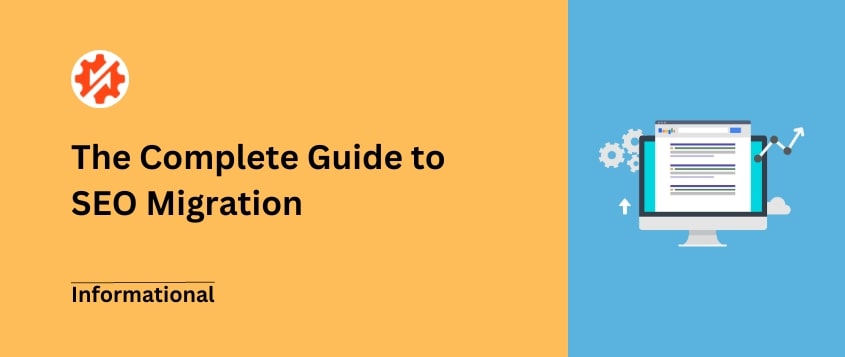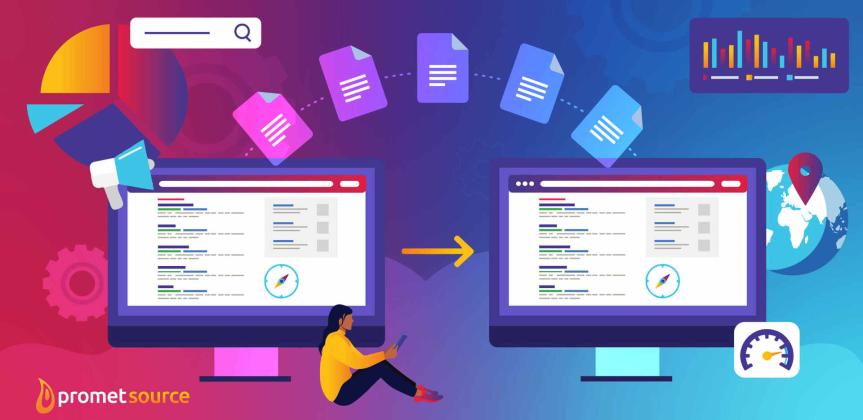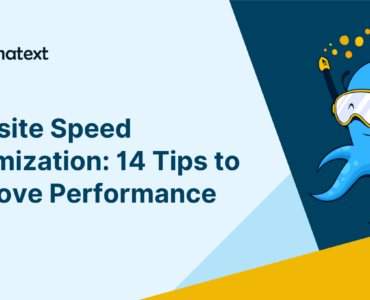A checklist for SEO-friendly website migration is vital for preserving search rankings and traffic. It includes auditing URLs, setting up 301 redirects, and updating internal links.
Website migration is a complex process involving various technical and SEO aspects. Ensuring a smooth transition without compromising search visibility and user experience is crucial. Here’s a comprehensive guide to help you navigate the website migration process seamlessly while maintaining SEO performance and avoiding potential pitfalls.
From planning and preparation to execution and monitoring, each step plays a pivotal role in the success of the migration. By following this checklist diligently, you can minimize the impact on your site’s SEO while reaping the benefits of an upgraded digital presence. Let’s dive into the essential elements of a SEO-friendly website migration to secure your organic traffic and search rankings.

Credit: duplicator.com
Why Do You Need A Website Migration Checklist?
Website migration can significantly impact your site’s visibility, search rankings, and overall user experience. Without proper planning and execution, it can lead to a variety of issues, such as broken links, missing content, and a drop in organic traffic. This is where having a comprehensive website migration checklist becomes essential – it helps ensure a seamless transition while safeguarding your website’s SEO performance and user engagement.
Avoid Potential Seo Pitfalls
When migrating your website, overlooking critical SEO elements can result in loss of search engine visibility. Search engines must be appropriately informed about the changes to your site to prevent plummeting down search results. A website migration checklist serves as a guide to identify and mitigate potential SEO pitfalls, such as redirect mapping, on-page optimization transfer, and XML sitemap update. This proactive approach shields your website’s organic visibility, maintaining its presence in search results.
Ensure A Smooth Transition
Ensuring a smooth transition during a website migration is crucial to maintaining user experience and preventing disruptions. A checklist acts as a roadmap, ensuring that all essential steps are taken, such as testing URLs, updating internal links, and monitoring server responses. By following a meticulous checklist, you can minimize the risk of broken links, missing images, and other technical errors that can negatively impact user engagement and overall site performance.

Credit: www.prometsource.com
Pre-migration Seo Checklist
When planning a website migration, it’s crucial to consider the impact on your SEO efforts. Implementing a Pre-Migration SEO Checklist can help minimize the risk of traffic and ranking losses. This checklist ensures that you maintain your website’s visibility and authority during and after the migration process. Let’s delve into the key components of the Pre-Migration SEO Checklist.
Perform A Website Audit
An in-depth website audit is imperative prior to migration. Identify any existing SEO issues, such as broken links, duplicate content, or crawl errors. This step helps in laying a solid foundation for a smooth migration process.
Create A 301 Redirect Map
Prepare a comprehensive 301 redirect map to ensure that all old URLs redirect to their corresponding new URLs. This is crucial for maintaining your website’s authority and preserving valuable backlinks.
Update Internal Links
Review and update internal links to reflect the new site structure. Ensure that the internal linking system is well-organized and optimized for both users and search engines.
Optimize Site Speed
Optimizing site speed is essential for SEO. Compress images, minify CSS and JavaScript files, and leverage browser caching to improve the loading time of your web pages. A fast site speed enhances user experience and positively impacts search rankings.
Content Migration Checklist
During a website migration, ensuring a smooth transition of content is crucial for maintaining and improving your site’s SEO performance. The content migration checklist provides a systematic approach to effectively migrating your website’s content while minimizing any negative impact on search engine rankings and user experience.
Migrate High-performing Content First
Migrating high-performing content first allows you to prioritize the most valuable pages, ensuring they maintain their visibility and performance during the migration process. Identify the top-performing pages based on traffic, conversions, and engagement metrics. These pages are often the cornerstone of your website’s success and should be given priority during the migration.
Implement Canonical Tags
Canonical tags play a crucial role in maintaining SEO rankings and avoiding duplicate content issues during a website migration. By specifying the preferred URL for each webpage, canonical tags inform search engines which version of the page should be indexed and displayed in search results. Ensure that each page’s canonical tag points to the correct URL, helping search engines understand the relationship between the old and new pages.
Update Metadata And Alt Tags
Metadata, such as page titles and meta descriptions, and alt tags for images are essential for improving search engine visibility. During the website migration, update and optimize these elements to ensure they accurately represent the content of each page. Incorporate relevant keywords and provide concise, informative descriptions that entice users to click through to your website.
| Action | Description |
|---|---|
| Compose unique and descriptive page titles | Create title tags that accurately summarize the page’s content and incorporate relevant keywords. |
| Write compelling, concise meta descriptions | Create meta descriptions that entice users to click while accurately reflecting the page’s content. |
| Optimize alt tags for images | Ensure alt tags provide descriptive text for images, incorporating relevant keywords to improve their discoverability. |
Maintain Url Structure
Maintaining a consistent URL structure during a migration is vital for preserving your website’s search engine rankings and preventing broken links. Ensure that the new URLs follow the same hierarchy and organization as the original URLs. Implementing proper 301 redirects from the old URLs to the new ones helps search engines understand the changes and transfer authority to the new pages.
Implementing the above content migration checklist will contribute to a successful website migration that preserves SEO performance and enhances user experience. By strategically prioritizing high-performing content, implementing canonical tags, updating metadata and alt tags, and maintaining URL structure, you can ensure a seamless transition that minimizes any negative impact on rankings and contributes to overall SEO success.
Post-migration Seo Checklist
After successfully migrating your website, it is crucial to ensure that your SEO efforts are not negatively affected. To avoid any potential drop in rankings or loss of traffic, it is necessary to follow a comprehensive Post-Migration SEO Checklist. This checklist includes important steps that will help you monitor and optimize your website’s performance in the post-migration phase. By adhering to this checklist, you can confidently address key SEO factors and maintain the visibility and rankings you have worked so hard to achieve.
Monitor Website Traffic And Rankings
One of the most critical aspects of post-migration SEO is closely monitoring your website’s traffic and rankings. It is essential to keep a close eye on any fluctuations or significant changes to identify and rectify any potential issues promptly. Use analytical tools like Google Analytics to regularly review your website’s traffic patterns. Pay attention to any noticeable drop in traffic or changes in user behavior. Additionally, track your keyword rankings using SEO tools like Ahrefs or SEMrush, ensuring you are aware of any keyword fluctuations after the migration.
Submit Updated Sitemap
Updating your sitemap after a website migration is crucial for search engines to discover and index your new website’s pages correctly. Once your migration is complete, make sure to generate and submit an updated XML sitemap. The sitemap should include the URLs of all your web pages. By doing so, you help search engines understand the new structure of your website, which can improve their crawling and indexing process.
Request Crawl Of New Site
Another essential step in your post-migration SEO checklist is requesting search engines to crawl your new website. Notifying search engines like Google about your migration can help accelerate the indexing process and ensure that your updated website appears in search engine results. Submitting a request for crawling through the Google Search Console is a straightforward process that can significantly benefit your website in terms of visibility.
Fix And Monitor 404 Errors
During a website migration, there is always a risk of encountering 404 errors, which can harm your SEO performance. It is crucial to identify and fix these errors promptly. Monitor your website regularly using tools like Screaming Frog or Google Search Console to identify any broken or missing pages. Once identified, take the necessary steps to redirect or fix the URLs, ensuring a seamless user experience and preserving your search engine rankings.
User Experience Checklist
When migrating your website, it’s crucial to prioritize user experience to ensure a smooth transition for your visitors. By following this user experience checklist, you can make sure that your website remains accessible and user-friendly during and after the migration process.
Perform Cross-browser Testing
Before finalizing your website migration, it’s necessary to perform cross-browser testing to ensure that your website renders correctly on different web browsers. Check how your website appears on popular browsers such as Chrome, Firefox, Safari, and Internet Explorer, focusing on important elements like fonts, images, and page layouts.
Check Mobile Responsiveness
In today’s mobile-driven world, having a mobile-friendly website is essential. Test your website’s responsiveness on various mobile devices and screen sizes to ensure that it adapts seamlessly to different resolutions. Verify that the content, navigation, and functionality of your website remain intact, providing mobile users with an optimal browsing experience.
Test Form Submissions
If your website contains any forms, such as contact forms or subscription forms, it’s crucial to test their functionality during the migration process. Submitting forms should result in successful data capture, without any errors or missing information. Check that all form elements, including text fields, checkboxes, and radio buttons, function properly and validate input correctly.
Ensure 301 Redirects Are Working Properly
When implementing website migration, it’s important to set up 301 redirects correctly to redirect users and search engines from old URLs to new URLs. Regularly check the redirects to ensure they are working as intended and directing users to the appropriate new pages. This prevents visitors from encountering broken links or landing on irrelevant pages, ensuring a seamless transition to your updated website.

Credit: www.w3era.com
Frequently Asked Questions On Seo-friendly Website Migration Checklist
How Do I Migrate My Website To Seo?
To migrate your website to SEO, follow these steps: 1. Research and select relevant keywords. 2. Optimize your website’s content using these keywords. 3. Improve your website’s loading speed for a better user experience. 4. Build high-quality backlinks to increase your website’s visibility.
5. Regularly monitor and analyze your website’s performance to make necessary adjustments.
What To Check When Migrating A Website?
When migrating a website, check for broken links, redirect traffic, backup data, test functionality, and update SEO settings.
How Do I Move My Website Without Losing Seo?
To move your website without losing SEO, set up 301 redirects for all old URLs, update internal links and sitemaps, inform search engines of the move using Google Search Console, maintain consistent content and meta tags, and monitor traffic and rankings post-migration.
Does Website Migration Affect Seo?
Website migration can impact SEO. During the process, it’s crucial to preserve URL structure, redirect old URLs to new ones, and ensure technical elements are intact. These steps maintain SEO value and minimize impact on search rankings.
Conclusion
To ensure a smooth website migration process, it is crucial to follow a comprehensive SEO-friendly checklist. By meticulously adhering to these guidelines, you can optimize your site’s visibility in search engine rankings while maintaining its user-friendly structure. From conducting thorough keyword research to implementing proper redirects and monitoring website analytics, each step is essential for a successful migration.
Remember, investing time and effort into website migration will ultimately lead to improved organic traffic and a better user experience.
Related Posts
Recent Posts
- Optimizing Images for SEO and Page Speed: Boost Your Website’s Performance!
- Seo for Local Businesses Step-By-Step Guide: Boost Your Online Success Today!
- The Role of Content Clusters in Modern SEO: Boost Your Rankings
- Supercharge Your SEO Success with High-Quality Backlinks
- Impact of User Experience on SEO Rankings: Boost Your Website’s Performance
Recent Comments
Archives
Categories
Categories
- Blog(40)
- Local SEO(1)
- On-Page SEO(1)
- SEO(7)
- SEO Optimization(1)





